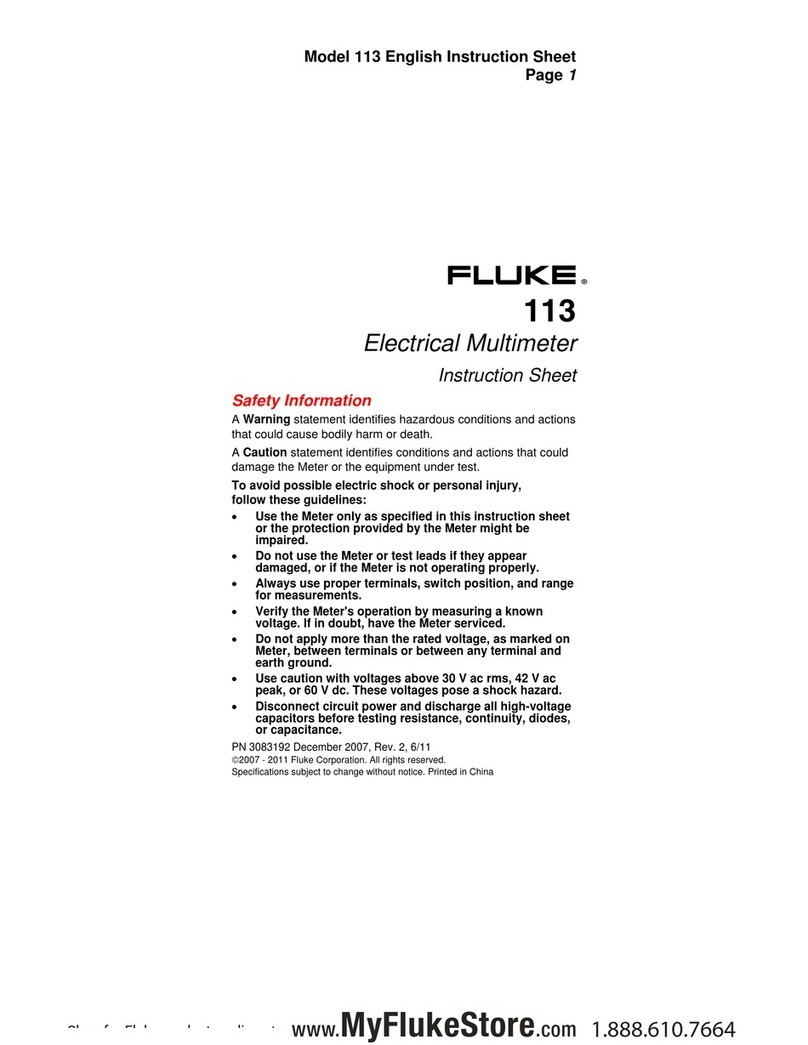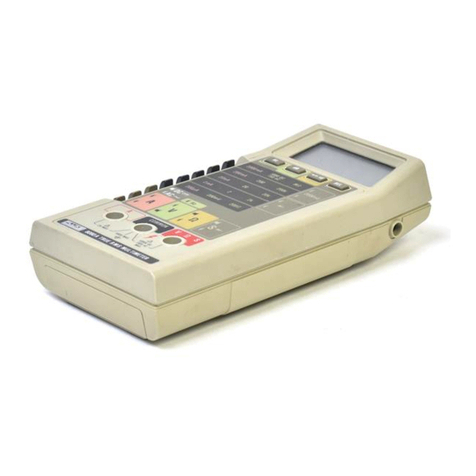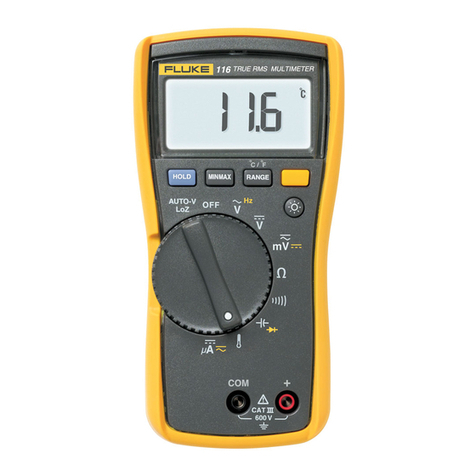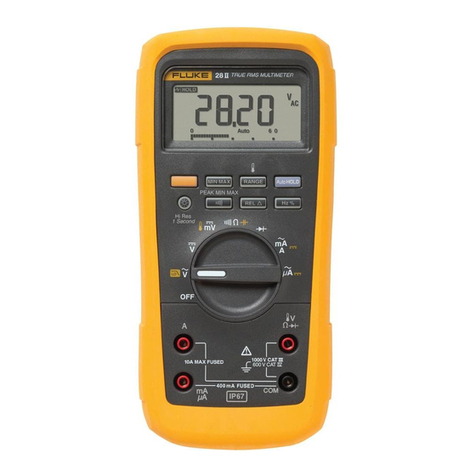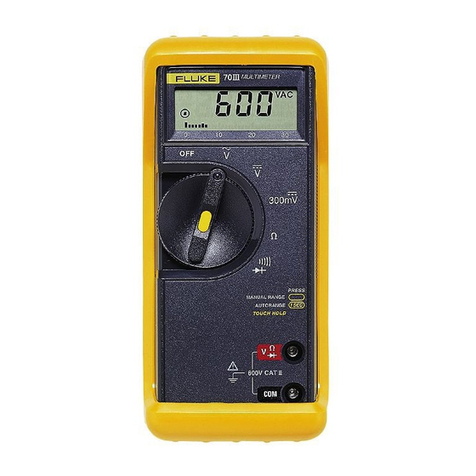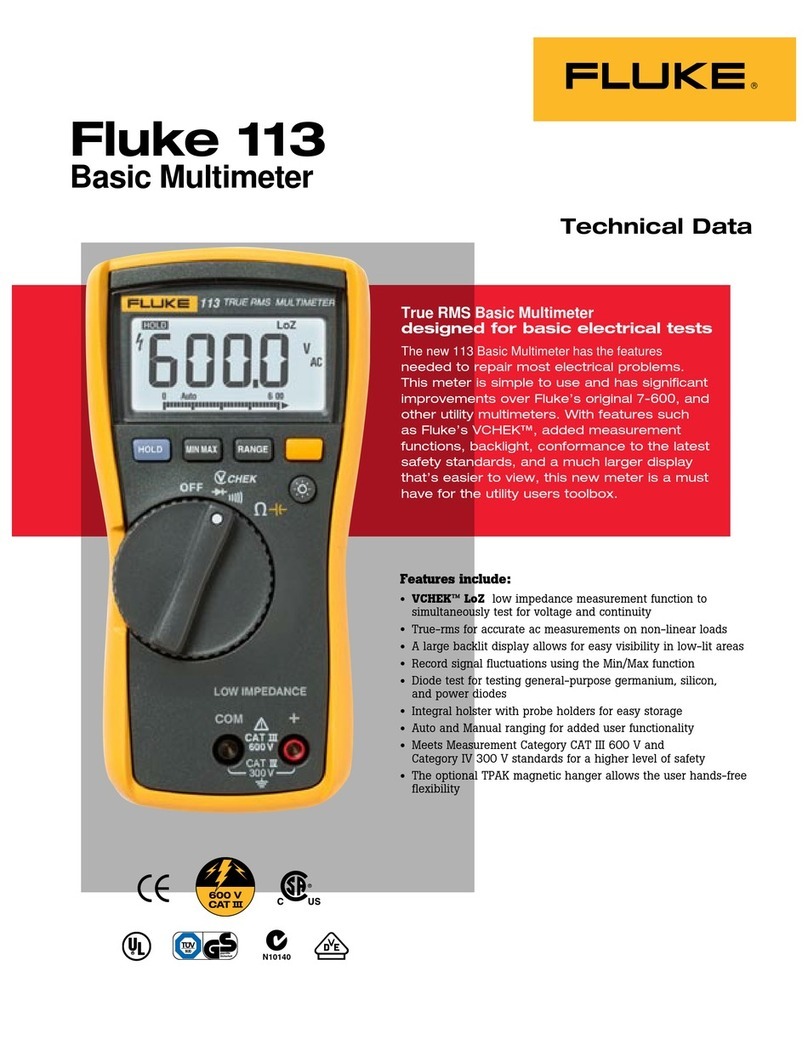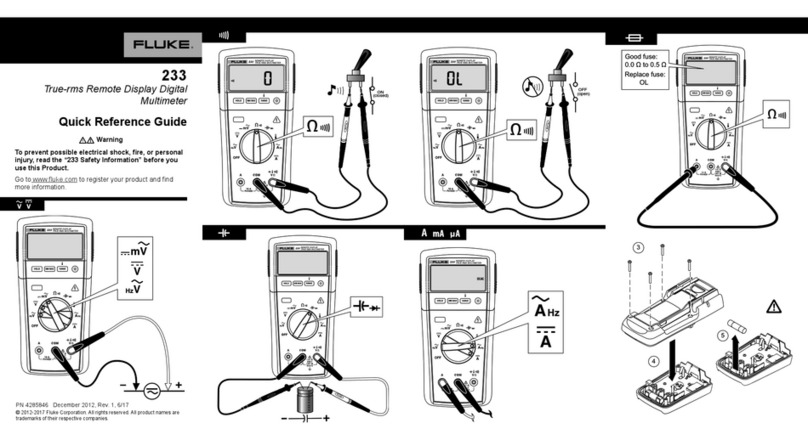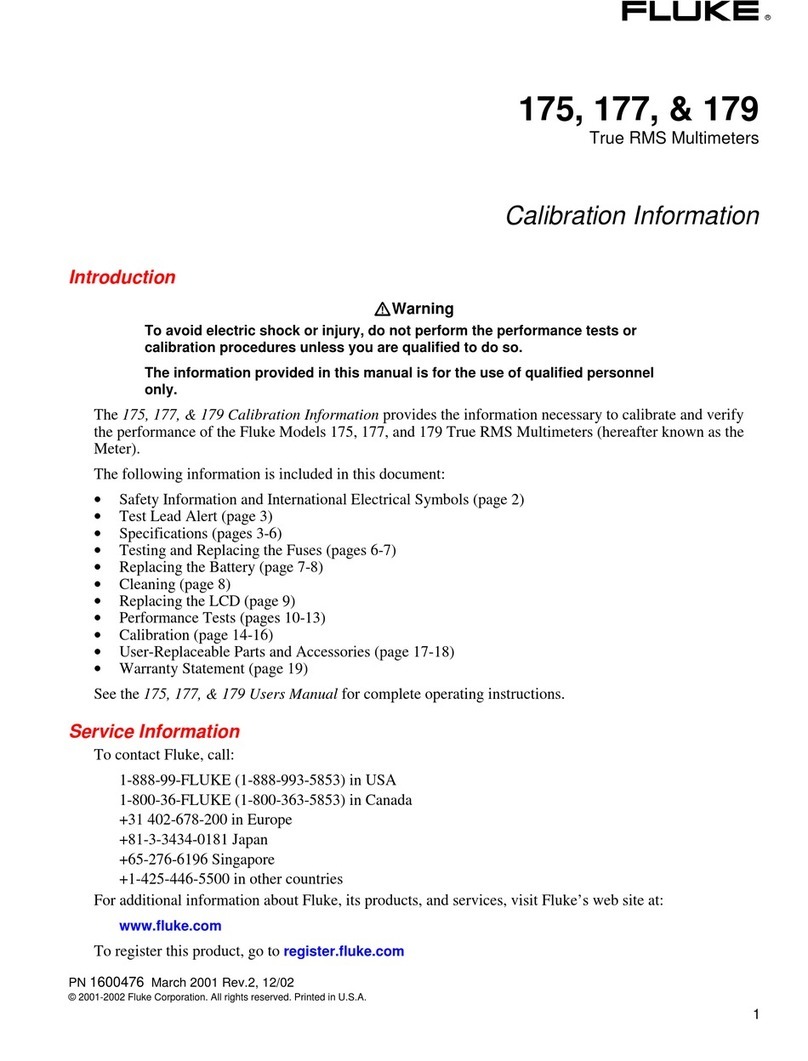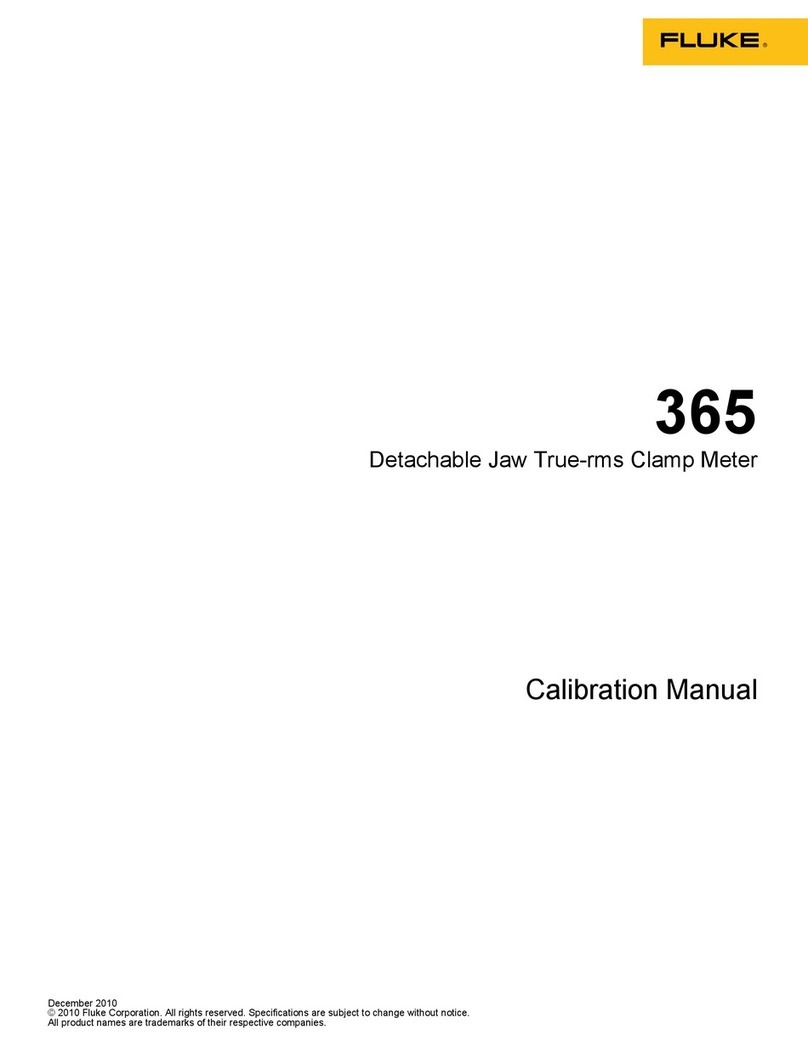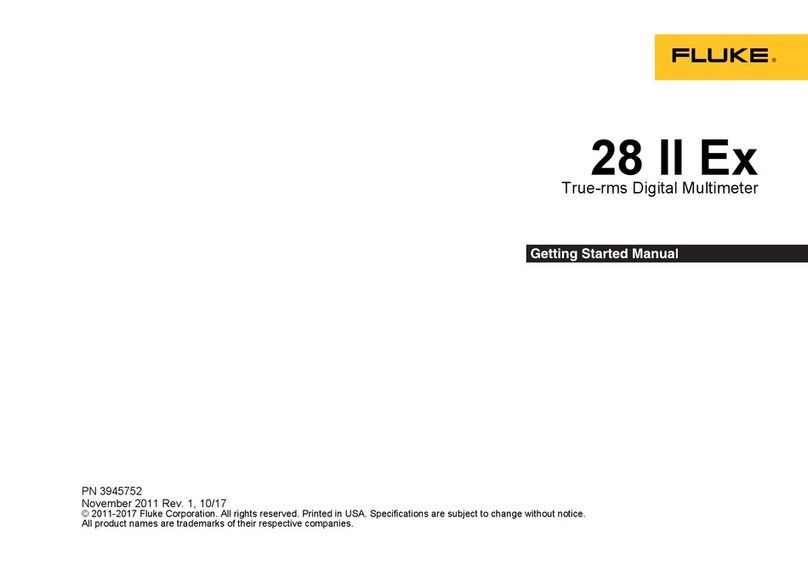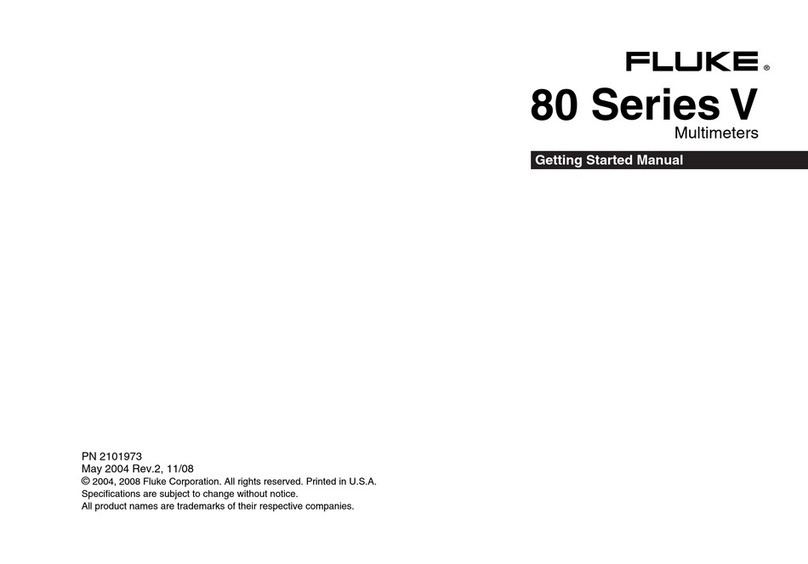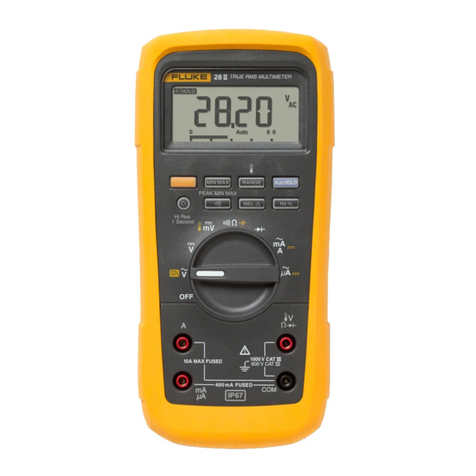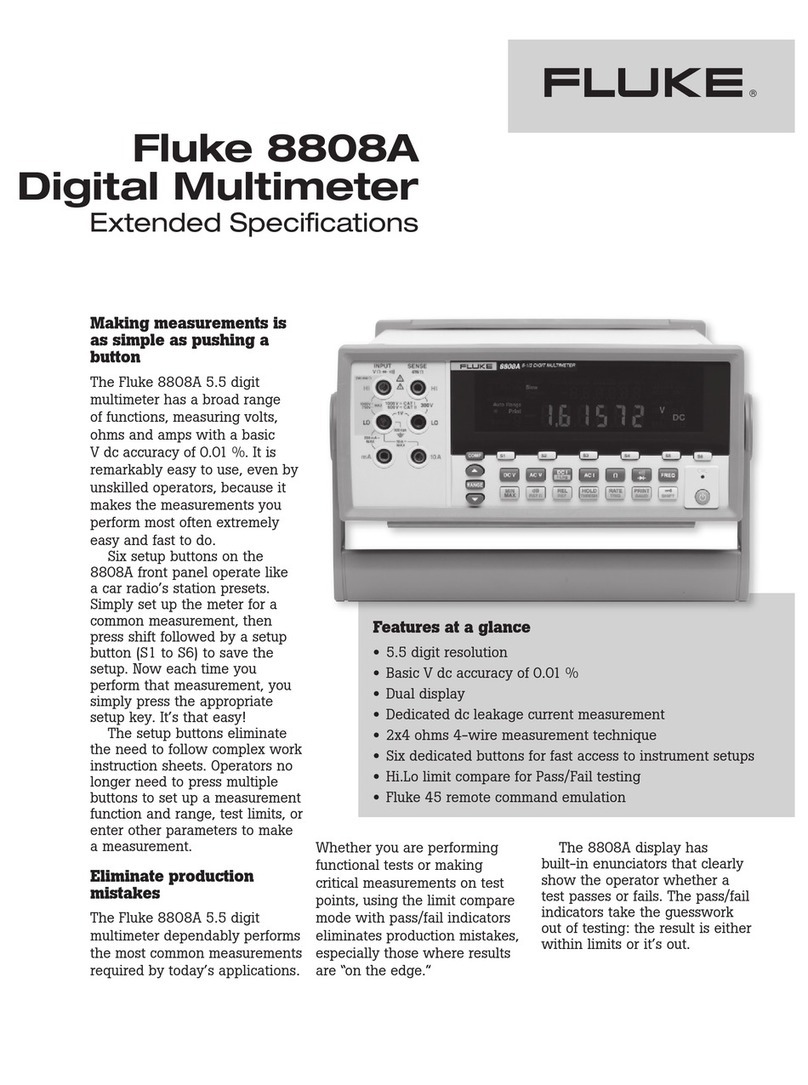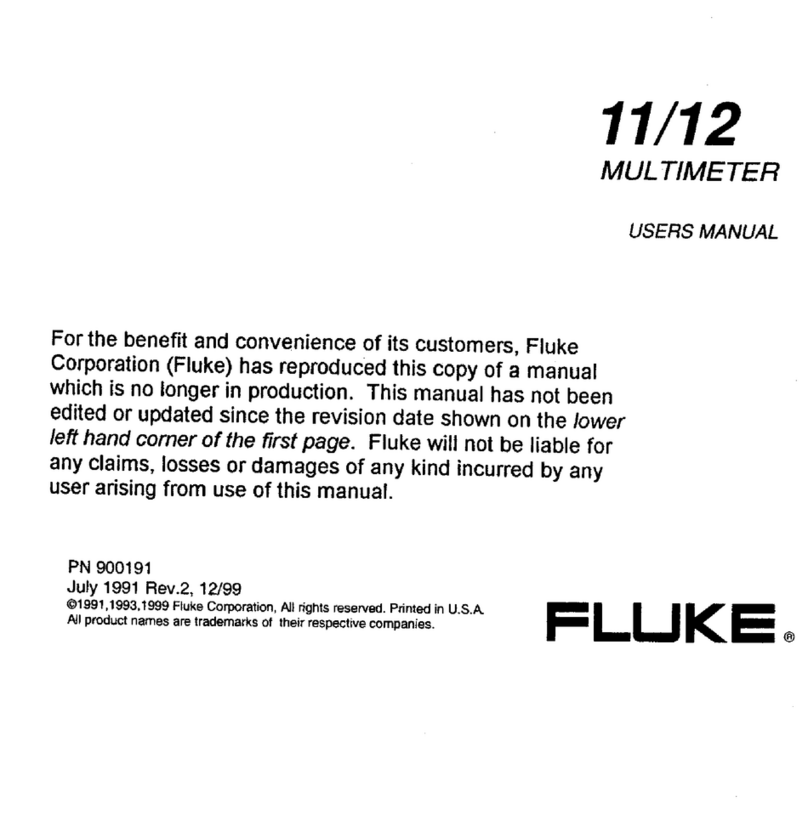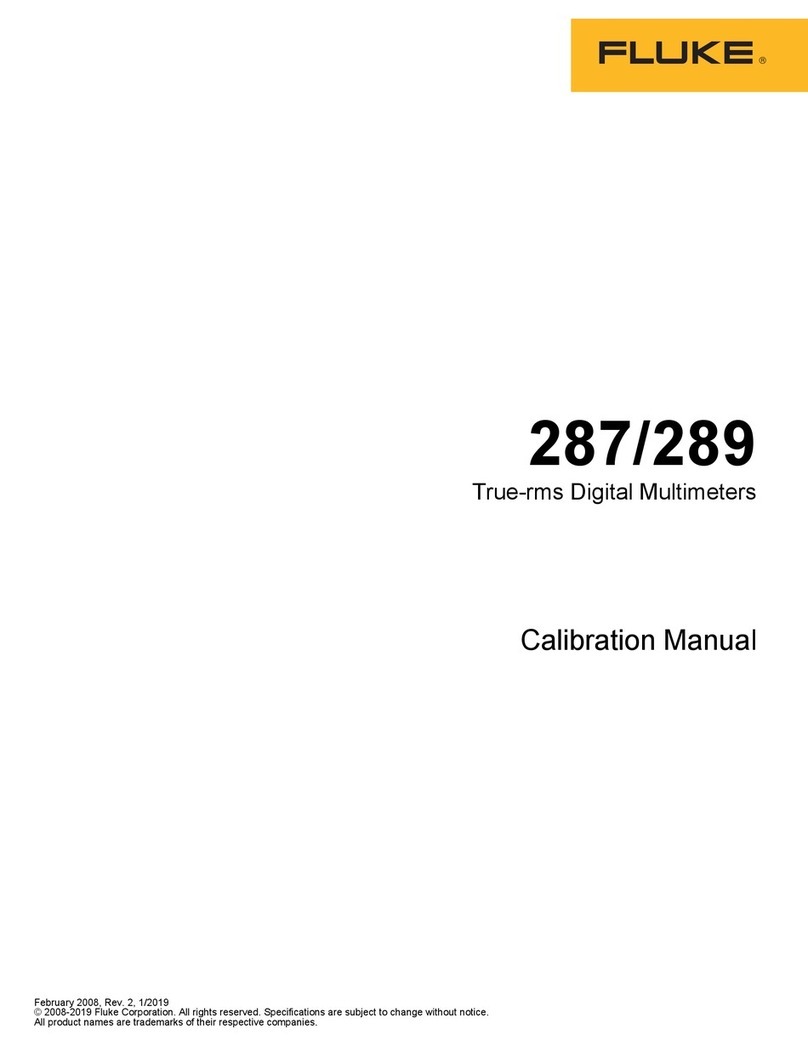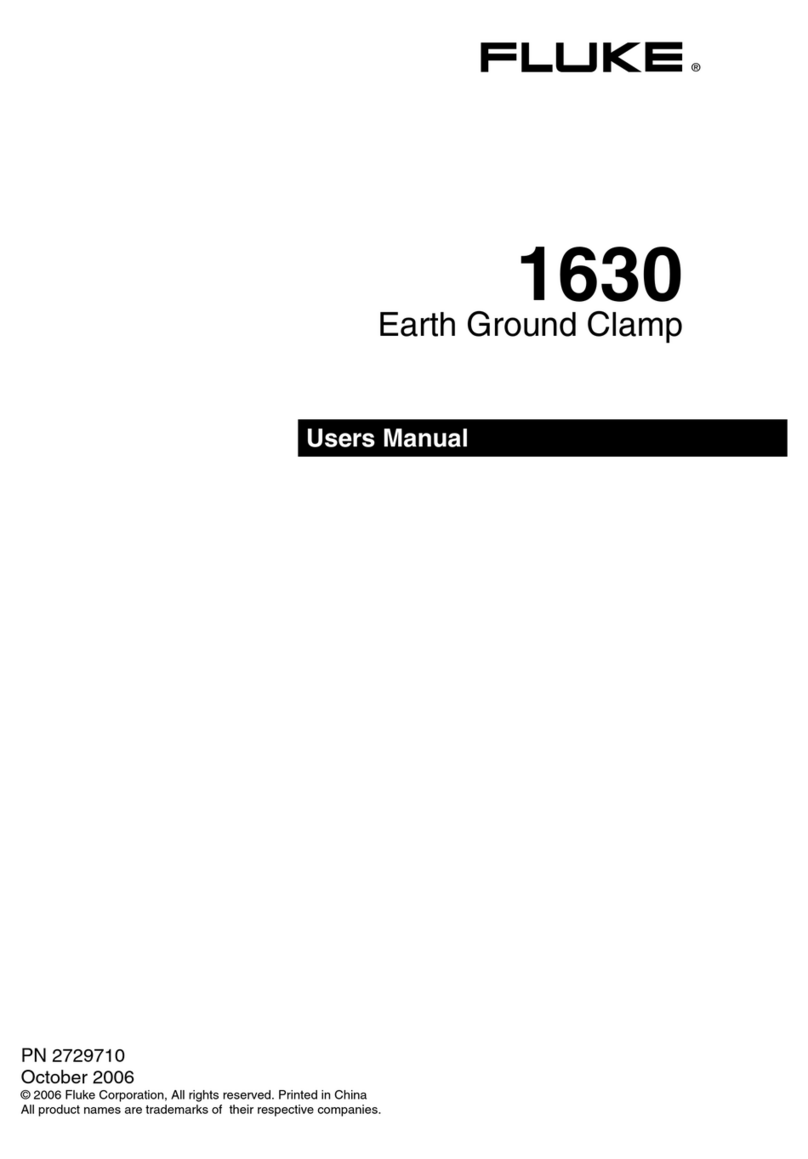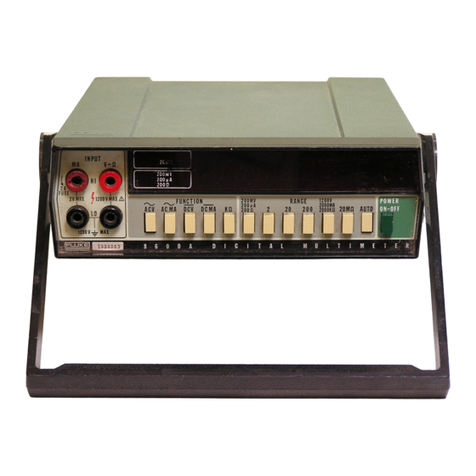
LifetimeLimited Warranty
EachFluke 20, 70, 80, 170and 180 Series DMM will be free from defects in material andworkmanship for its lifetime. As used herein, “life-
time” is defined as seven years afterFluke discontinues manufacturing theproduct, butthe warranty period shall beat least ten years from
the dateof purchase. This warranty does notcoverfuses, disposable batteries, damage from neglect, misuse, contamination, alteration,
accident or abnormal conditions of operationor handling, including failures caused by use outsideof the product’s specifications, or normal
wear and tear of mechanicalcomponents. This warranty coversthe original purchaser only and is nottransferable.
For ten years from thedate of purchase, this warranty alsocovers theLCD. Thereafter, for the lifetime of the DMM, Fluke will replace the
LCD for a fee based on then current component acquisition costs.
To establish original ownership andprove date of purchase, pleasecompleteand return the registrationcard accompanying the product, or
register your product on http://www.fluke.com. Flukewill, at its option, repair at no charge, replace orrefund thepurchase price of a defective
product purchased through a Flukeauthorizedsales outlet and atthe applicable international price. Fluke reservesthe right tocharge for
importationcosts of repair/replacement parts if the product purchasedin one countryis sentfor repair elsewhere.
Ifthe product is defective, contact your nearest Flukeauthorizedservice center to obtain return authorization information,then send the
productto thatservicecenter, with adescriptionof the difficulty, postageand insurance prepaid (FOB Destination). Fluke assumes no risk
for damage intransit. Flukewill pay return transportationfor product repaired or replaced in-warranty. Before making any non-warranty re-
pair, Fluke will estimatecost and obtain authorization,then invoice you forrepair and return transportation.
THIS WARRANTY IS YOUR ONLY REMEDY. NO OTHER WARRANTIES, SUCH AS FITNESS FOR APARTICULARPURPOSE, ARE
EXPRESSEDORIMPLIED.FLUKESHALL NOT BELIABLE FORANY SPECIAL, INDIRECT,INCIDENTALORCONSEQUENTIAL DAM-
AGES ORLOSSES,INCLUDINGLOSS OF DATA, ARISINGFROMANY CAUSEORTHEORY. AUTHORIZEDRESELLERS ARENOT
AUTHORIZED TO EXTEND ANY DIFFERENT WARRANTY ON FLUKE’S BEHALF. Sincesome states do not allowthe exclusion or limita-
tion of an impliedwarranty orof incidental or consequential damages, this limitation ofliability may not apply toyou. If any provisionof this
warranty is heldinvalid or unenforceable by acourt or other decision-maker ofcompetent jurisdiction, such holdingwill not affectthe validity
or enforceability of any other provision.
Fluke Corporation Fluke Europe B.V.
P.O. Box 9090 P.O. Box 1186
Everett, WA 98206-9090 5602 BD Eindhoven
U.S.A. The Netherlands
Visitthe Fluke website at: www.fluke.com
Register yourMeter at: register.fluke.com
2/02

